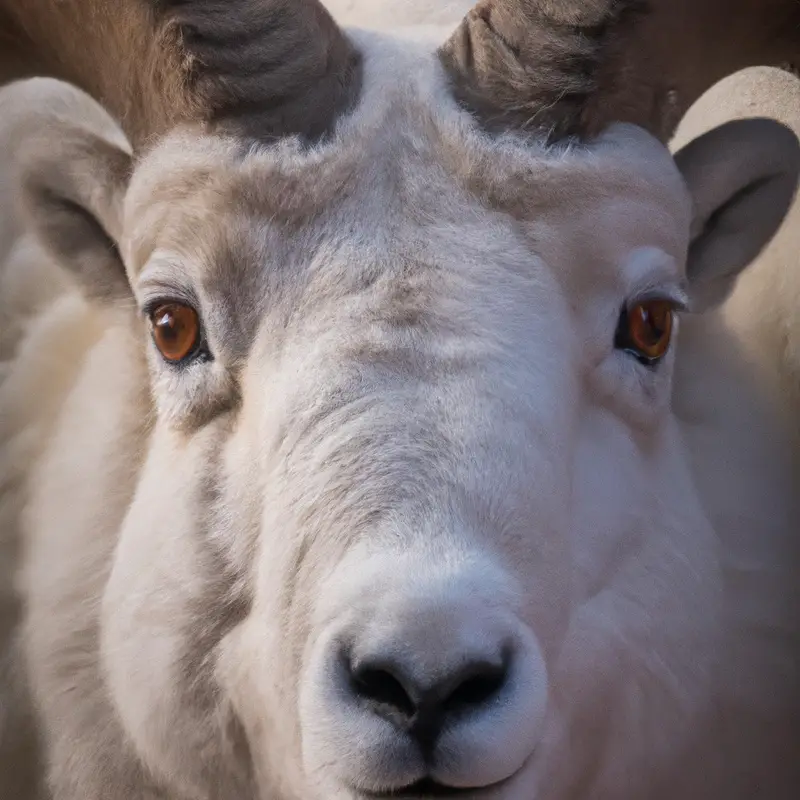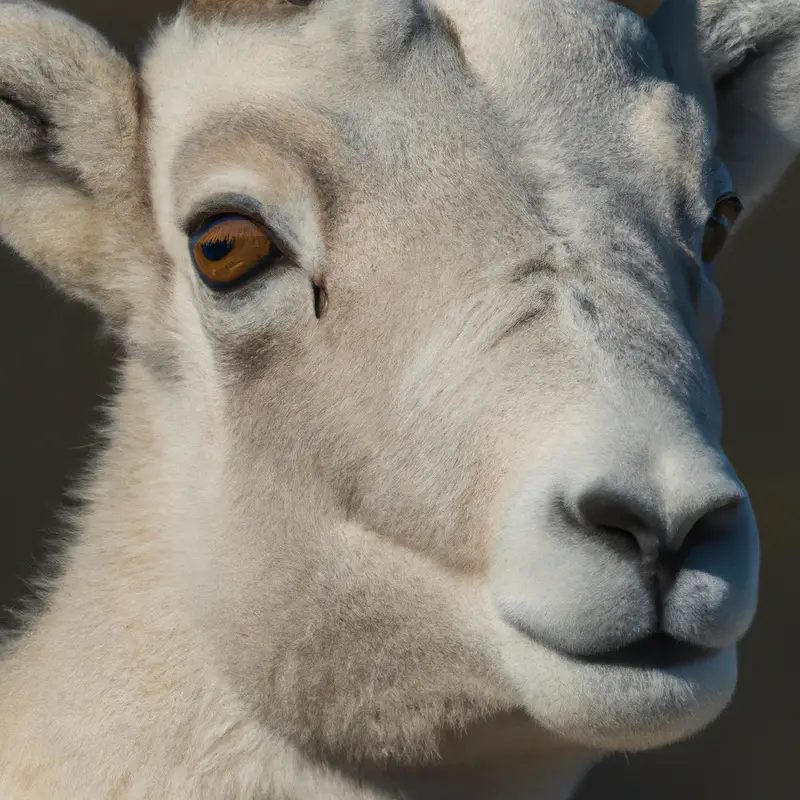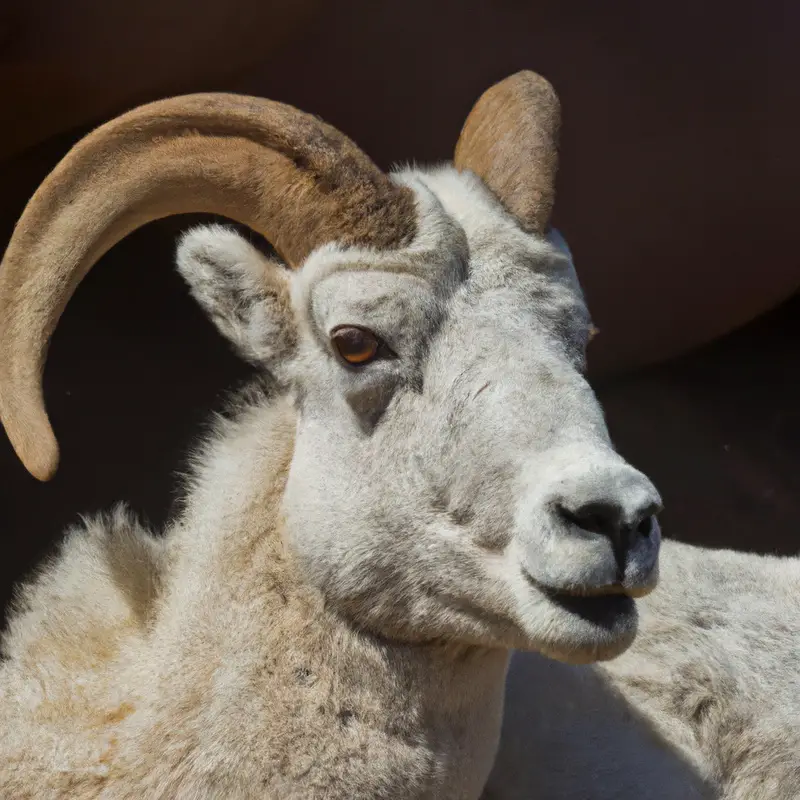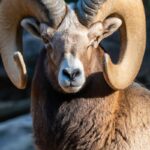Key Takeaways:
- Hunting Dall sheep in Alaska requires physical endurance and wilderness navigation skills.
- Hunters must obtain the necessary permits and adhere to strict hunting regulations in Alaska.
- Successful Dall sheep hunting in Alaska typically involves long hours of patient scouting and stalking.
- Dall sheep provide a challenging and rewarding hunting experience for those willing to trek through Alaska’s rugged terrain.
Imagine standing atop a rugged mountain peak in the vast wilderness of Alaska, your heart pounding with the thrill of the hunt. The crisp air fills your lungs as you gaze out across the breathtaking landscape, searching for the elusive Dall sheep.
As an avid hunter with years of experience, I can tell you that few adventures compare to the challenge and reward of pursuing these majestic creatures.
In this guide, I’ll share my expertise on planning, timing, techniques, physical preparation, safety, and trophy considerations for hunting Dall sheep in Alaska. Get ready for an unforgettable expedition into the untamed beauty of the Last Frontier.
Aspect | Details |
Location | Alaska, especially around the rugged mountains of Denali National Park |
Season | August to September |
License | Required |
Dall sheep population | Approximately 40,000 in Alaska |
Physical characteristics | – White coat with a thick undercoat for insulation – Both males and females have horns – Males (rams) have large curling horns, which grow throughout their life – Females (ewes) have shorter and thinner horns |
Challenges | – Difficult and remote terrain – Extreme weather conditions – High altitude hunting – Sheep are highly vigilant and possess excellent eyesight |
Tools and equipment | – High-powered rifle (.270 or larger) – Sturdy hiking boots – Optics (binoculars, spotting scope) – Knife for field dressing – Backpack for gear and meat hauling – Clothing suitable for layering and weather conditions |
Guided or self-guided | Both options available |
Limited quota | Allocated based on population management and conservation efforts |
Ethics | – Respect for nature and wildlife – Adherence to hunting regulations and practices – Prudent and responsible shot selection – Ensuring legal and ethical trophy handling |
Conservation efforts | – Sustainable population management plans – Collaboration with local communities and tribes – Preservation of habitat and migration corridors |
Planning a Dall sheep hunting trip in Alaska
Researching hunting areas and regulations
When researching hunting areas in Alaska, start by identifying specific regions known for Dall sheep populations, such as the Alaska Range or Wrangell-St. Elias National Park. Check state hunting regulations to ensure you meet residency requirements and possess the necessary licenses and permits.
Familiarize yourself with bag limits, hunting seasons, and any restrictions or prerequisites.
Consult online resources, hunting forums, and local outfitters to gather firsthand information and recommendations. Additionally, consider the terrain, weather conditions, and accessibility of the hunting area to plan accordingly.
Obtaining necessary permits and licenses
To go hunting for Dall sheep in Alaska, it is important to obtain the necessary permits and licenses.
Here’s what you need to do:
- Research: Start by researching the specific hunting regulations and requirements for Dall sheep in Alaska. Check the Alaska Department of Fish and Game website for all the information you need.
- Permits: Determine the type of permit you need based on your residency, whether you are a resident or non-resident. Each category has different permits available.
- License: Make sure you have a valid hunting license for Alaska. This is a prerequisite for obtaining any hunting permits.
- Application process: Follow the application process outlined by the Alaska Department of Fish and Game. Be aware of any deadlines and fees associated with the permits you require.
- Training: Some hunting permits may require completing a hunter education course. Check to see if you need to complete any training before applying for permits.
- Gathering documentation: Ensure you have all the necessary documentation, such as identification and residency proof, to support your permit application.
- Submitting the application: Once you have completed the necessary steps and gathered all the required documentation, submit your application online or through the designated channels.
Selecting appropriate hunting gear and equipment
When you’re preparing for a Dall sheep hunting trip in Alaska, selecting the right gear and equipment is essential. Here are a few tips to help you choose wisely:
- Clothing: Opt for lightweight, moisture-wicking layers that can adapt to changing weather conditions. Don’t forget to pack a good pair of waterproof boots for rugged terrain.
- Optics: Invest in high-quality binoculars and a spotting scope. These will help you spot sheep from a distance and evaluate their trophy potential.
- Rifles and Ammunition: Choose a rifle suited for long-range shots and select ammunition that provides sufficient power and accuracy for Dall sheep hunting.
- Backpack: Look for a sturdy backpack with enough storage space for essential items like food, water, and survival gear. It should also be comfortable to carry during long hikes.
- Knives and Field Dressing Tools: Bring a reliable, sharp knife for field dressing and butchering. Additionally, pack bone saws, game bags, and other tools needed for processing the meat.
- Navigation and Communication: Carry a GPS device or map and compass to navigate the rugged terrain. It’s also a good idea to have a satellite phone or a two-way radio for emergency communication.
Remember, selecting appropriate hunting gear and equipment is crucial for a successful and enjoyable hunting experience in Alaska.
Best time to hunt Dall sheep in Alaska
Seasonal patterns and considerations
When planning to hunt Dall sheep in Alaska, it’s important to consider the seasonal patterns.
During early fall, sheep tend to be at higher elevations, making them harder to hunt.
As winter approaches, they move to lower elevations, which can improve your chances of success.
However, harsh weather conditions and limited visibility can also pose challenges.
Spring and summer are prime hunting seasons when the sheep return to higher elevations and their winter coats shed.
Understanding these seasonal patterns will help you strategically plan your hunt for the best chances of a successful harvest.
Weather conditions and their impact on hunting success
The weather conditions can have a significant impact on hunting success. Here are some key points to consider:
- Visibility: Clear weather with minimal fog or precipitation improves visibility, allowing you to spot game from a distance.
- Animal behavior: Extreme temperatures or heavy rain can affect animal movement patterns. Animals may seek shelter during inclement weather, making it harder to locate them.
- Noise reduction: In wet or snowy conditions, noise is muffled, which may work to your advantage when stalking game. However, windy conditions can make it harder to move quietly.
- Wind direction: Pay attention to wind direction, as animals have a keen sense of smell. Hunting against the wind helps mask your scent and increases the chances of getting closer to your target undetected.
- Temperature: Animals tend to be more active during cooler temperatures. Early morning or late afternoon hunts are often preferred when the air is cooler.
Remember, observing and adapting to the current weather conditions is essential for a successful hunt. Stay informed and adjust your strategy accordingly.
Techniques for hunting Dall sheep in Alaska
Spot-and-stalk method
The spot-and-stalk method is a popular technique for hunting Dall sheep in Alaska.
It involves locating a sheep from a distance, usually with the help of binoculars, and then carefully approaching it by using the terrain for cover.
This method requires patience, sharp observation skills, and the ability to move quietly and slowly.
It’s important to study the sheep’s behavior and anticipate their movements to get within shooting range.
Remember to stay downwind and avoid sudden movements that could alert the sheep.
Good camouflage clothing and gear are also crucial for blending into the surroundings.
Happy hunting!

Glassing techniques for identifying sheep
Glassing is a key technique for identifying sheep while hunting in Alaska.
Begin by finding a vantage point with a clear line of sight and use binoculars to scan the landscape.
Look for movement or unusual shapes that could indicate a sheep.
Pay attention to specific features such as the color and shape of the animal’s coat, the size and shape of its horns, and its distinctive behaviors.
Take your time and be patient, as sheep can blend into their surroundings.
Remember to focus on one area at a time and use the glassing technique consistently throughout your hunt.

Understanding sheep behavior and habitat
Understanding sheep behavior and habitat is essential for successful hunting. Sheep are highly adaptive and can be found in diverse habitats, ranging from mountains to open grasslands.
They are social animals and tend to stay in groups called bands.
During the day, sheep usually feed and rest in higher elevations to avoid predators. Their keen eyesight, hearing, and sense of smell also help them detect possible threats.
Being aware of their behavior patterns and preferred habitats will greatly increase your chances of locating and hunting Dall sheep in Alaska.

Physical preparation for Dall sheep hunting in Alaska
Conditioning and endurance training
Conditioning and endurance training is crucial for hunting Dall sheep in Alaska. To prepare, focus on cardio exercises such as running, hiking, and cycling to build endurance.
Incorporate strength training exercises like lunges, squats, and deadlifts to increase overall fitness and muscle strength.
Additionally, don’t forget about core exercises for stability and balance. Remember to gradually increase intensity and duration of your workouts to avoid injury.
Stay consistent and train regularly to be well-prepared for the physical demands of Dall sheep hunting.
Altitude acclimatization
Altitude acclimatization is a key consideration when hunting Dall sheep in Alaska. As you venture into higher elevations, your body needs time to adjust to the reduced oxygen levels.
Gradually increasing your exposure to higher altitudes over several days can help prevent altitude sickness and enhance your performance.
Taking rest breaks, hydrating properly, and maintaining a balanced diet can also aid in acclimatization. It’s essential to listen to your body and prioritize safety during this process.
Strength and flexibility exercises
To prepare physically for Dall sheep hunting in Alaska, it’s important to focus on strength and flexibility exercises. These exercises help you endure the rugged terrain and challenging conditions you may encounter.
Strength training, such as squats and lunges, helps build muscle and improve stamina.
Flexibility exercises like stretching and yoga enhance your range of motion and prevent injury. Incorporating these exercises into your routine will greatly benefit your hunting experience in the Alaskan wilderness.
Remember to consult with a professional trainer to ensure you’re using proper form and technique.
Tracking and stalking Dall sheep in Alaska
Identifying sheep tracks and signs
Identifying sheep tracks and signs is an essential skill for hunting Dall sheep in Alaska. When tracking, look for hoofprints with distinctive diamond shapes.
Sheep tracks typically have a narrow heel and a deep, pointed toe.
You may also find feces, known as scat, which can provide clues about the animal’s diet and health. Look for hair caught on rocks or vegetation, as well as rub marks on trees where sheep have rubbed against them.
Observing these tracks and signs will help you locate and pursue Dall sheep effectively in the rugged Alaskan wilderness.
Approaching sheep without alerting them
Approaching Dall sheep without alerting them requires careful strategy and awareness.
- Move slowly and quietly, taking small steps to minimize noise and maintain stealth.
- Stay low and use the terrain to your advantage, utilizing natural cover like rocks or trees to mask your presence.
- Avoid sudden movements or gestures that may startle the sheep, as they are highly alert and skittish.
- Pay attention to wind direction, ensuring that your scent doesn’t carry towards the sheep.
- Use binoculars to spot the sheep from a distance and plan your approach accordingly.
- Be patient and observant, taking the time to study their behavior and movements before making your move.
By being mindful of these tactics, you can increase your chances of getting close to the sheep without alerting them.
Strategies for a successful stalk
To have a successful stalk while hunting Dall sheep in Alaska, there are a few key strategies to keep in mind.
- Stay downwind: Sheep have a keen sense of smell, so it’s crucial to approach from downwind to avoid being detected.
- Use cover to your advantage: The terrain in Alaska can be rugged, so take advantage of natural cover such as rocks, trees, or even brush to stay hidden and approach slowly.
- Move slowly and quietly: Dall sheep are extremely wary, so any sudden movements or loud noises can spook them. Take your time and move with deliberate, measured steps.
- Use binoculars: Spotting sheep from a distance is essential for planning your stalk. Carry lightweight binoculars to scan the terrain and locate your target.
- Patience is key: Stalking Dall sheep requires patience and persistence. Take your time, observe their behavior, and wait for the ideal moment to make your move.
Field dressing and processing a harvested Dall sheep
Proper field dressing techniques
Proper field dressing techniques are essential when it comes to preparing a harvested Dall sheep.
Here are some key steps to follow:
- Start by locating the entry and exit wounds and assess the damage to the meat.
- Position the sheep on its back and make an incision from the breastbone to the anus.
- Carefully remove the internal organs, taking care not to puncture the intestines or bladder.
- Remove the rectum, windpipe, and esophagus.
- Rinse the cavity with cold water to clean any debris.
- Make sure to cool the meat down as quickly as possible.
- Trim any excess fat and remove the hide to prevent spoilage.
- Properly package and label the meat for transportation.
Skinning and butchering the meat
When it’s time to skin and butcher the meat of a harvested Dall sheep, there are a few key steps to follow.
First, carefully skin the animal, removing the hide in one piece if possible.
Next, quarter the animal by cutting it into four sections: front shoulder, hindquarter, loin, and rib section.
Remove any excess fat or connective tissue.
Finally, cut the meat into desired cuts, such as chops or roasts, and package it for freezing or cooking.
The process requires precision and sharp knives to ensure the best quality meat.
Packing and transporting the meat
Packing and transporting the meat is a crucial part of the hunting process. Here are some tips to ensure that you do it correctly:
- Start by field dressing the animal as soon as possible to help cool the meat down and prevent spoilage.
- Once field dressed, carefully quarter the animal, removing the meat from the bone. It’s important to keep the meat clean and free from dirt and debris.
- Use game bags or cheesecloth to wrap the meat securely, protecting it from insects and contaminants.
- Pack the meat in a sturdy cooler or game bag with ice packs or dry ice to keep it cool during transportation. Make sure the cooler is stored in a shaded area and avoid opening it unnecessarily.
- If you’re flying, check with the airline for specific regulations regarding transporting game meat. It’s a good idea to pack the meat in a cooler and secure it with strong tape to prevent leakage.
Remember, proper packing and transportation ensure the meat stays fresh and safe to consume, so take these steps seriously.
Hunting safety tips for Dall sheep hunting in Alaska
Wilderness survival skills
In the wilderness, it’s important to have essential survival skills.
Here are some tips to remember:
- Find shelter: Look for natural formations or build a sturdy shelter to protect yourself from the elements.
- Locate water: Water is crucial for survival. Learn how to find and purify water to stay hydrated.
- Start a fire: Fire provides warmth, light, and can be used for cooking. Carry fire-starting tools and practice your fire-making skills.
- Learn to navigate: Familiarize yourself with maps and compasses, and learn basic navigation techniques to avoid getting lost.
- Signal for help: Carry signaling devices like whistles or mirrors to attract attention if needed.
- Store food properly: Proper food storage prevents attracting wildlife and ensures your own sustenance.
- First aid: Learn basic first aid skills to treat injuries and illnesses in the wilderness.
- Stay positive, calm, and focused: Maintain a positive mindset, which will help you make rational decisions and stay resilient in challenging situations.
Remember, the key to wilderness survival is preparedness and knowledge.
Stay safe and enjoy your outdoor adventures!
Navigation tools and techniques
Navigation is crucial when hunting Dall sheep in Alaska.
Here are some useful tools and techniques that can help you stay on track:
- Map and Compass: Always carry a detailed topographic map and a reliable compass. Familiarize yourself with the terrain and key landmarks before starting your hunt.
- GPS Device: Invest in a GPS device or smartphone app specifically designed for hunting. These tools provide accurate location tracking, allowing you to mark important spots or waypoints along your journey.
- Landmarks and Terrain Features: Pay attention to distinct landmarks and terrain features such as ridges, rivers, and valleys. These can help you stay oriented and navigate more effectively.
- Mental Note Taking: While navigating, make mental notes of your surroundings, significant landmarks, and changes in terrain. This will aid in retracing your steps if needed.
- Tracking: Familiarize yourself with tracking techniques to help you follow your prey and find your way back to camp. This includes recognizing signs such as footprints, droppings, and broken vegetation.
Remember, proper navigation skills are essential for a successful and safe Dall sheep hunting adventure in Alaska.
Stay aware of surroundings, use reliable tools, and always prioritize your safety.
Bear safety precautions
Bear safety precautions are essential when hunting in bear country. Here are a few key tips to ensure your safety:
- Carry bear spray: Always have bear spray readily accessible. It can deter a bear from approaching and potentially save your life.
- Make noise: Bears are more likely to avoid you if they know you’re coming. Talk loudly, clap your hands, or use bear bells to alert bears of your presence.
- Stay alert and observant: Keep an eye out for any signs of bear activity, such as tracks, scat, or carcasses. Be particularly cautious near food sources or dens.
- Proper food storage: Store your food and scented items in bear-resistant containers or hang them at least 10 feet off the ground and 4 feet away from the trunk of trees.
- Travel in groups: It’s safer to travel with others, as bears are less likely to approach a larger group. Stay close and communicate with each other.
- Learn bear behaviors: Educate yourself on bear behaviors and body language. Understanding their signs can help you gauge their intent and respond appropriately.
- Always have a plan: Before heading out, make sure you have a plan in case you encounter a bear. Know how to react and escape safely without causing harm to yourself or the bear.
Remember, bears are wild animals, and it’s crucial to respect their space and follow these safety precautions to minimize any potential conflicts. Stay informed and prepared to ensure a safe hunting experience in bear country.
Trophy considerations for Dall sheep hunting in Alaska
Determining the age and quality of a ram
Determining the age and quality of a ram can be challenging but essential for successful Dall sheep hunting in Alaska.
Look for signs such as horn size, thickness, and growth rings, as these can give you a good estimate of the ram’s age.
Additionally, examine the body size and condition of the ram, focusing on factors like muscle tone and fat cover, which indicate its quality.
Pay attention to any injuries or scars, as they can affect the ram’s value as a trophy.
Consulting with experienced guides or fellow hunters can provide valuable insights and help you make an informed decision.
Trophy measurement methods
Trophy measurement methods for hunting Dall sheep in Alaska vary but typically follow a few key guidelines. The most common method is the Boone and Crockett scoring system, which measures the length of the horns and the circumference at different points.
Another popular method is the Pope and Young scoring system, which focuses on the length of the main beam and the length of the tines.
Both systems provide a standardized way to compare trophies and ensure fair competition. It’s important to familiarize yourself with these methods and use them accurately to determine the size of your Dall sheep trophy.
Preserving and displaying the trophy
Preserving and displaying your trophy is an important part of the hunting experience.
When it comes to preserving the trophy, you’ll want to take care of the hide, horns, or antlers properly.
This involves cleaning, drying, and storing them in a cool, dry place.
Displaying the trophy can be a source of pride and a way to share your hunting experience with others.
Consider mounting the horns or antlers on a plaque or creating a custom display case.
Remember to keep the trophy away from direct sunlight and moisture to ensure its longevity.
Final Verdict
Hunting Dall sheep in Alaska is a thrilling and rewarding experience that requires careful planning, physical preparation, and knowledge of hunting techniques.
Researching hunting areas, obtaining necessary permits, and selecting appropriate gear are essential steps for a successful trip.
Understanding the seasonal patterns, weather conditions, and sheep behavior can greatly impact hunting success.
Physical conditioning, tracking skills, and proper field dressing techniques are key to a safe and efficient hunt.
Lastly, practicing hunting safety and considering trophy considerations add to the overall experience.
With the right preparation and knowledge, hunting Dall sheep in Alaska can be a truly unforgettable adventure.








